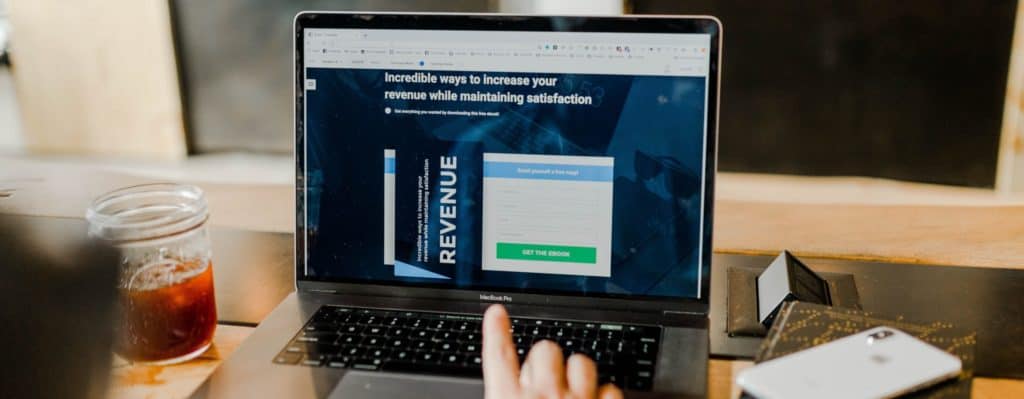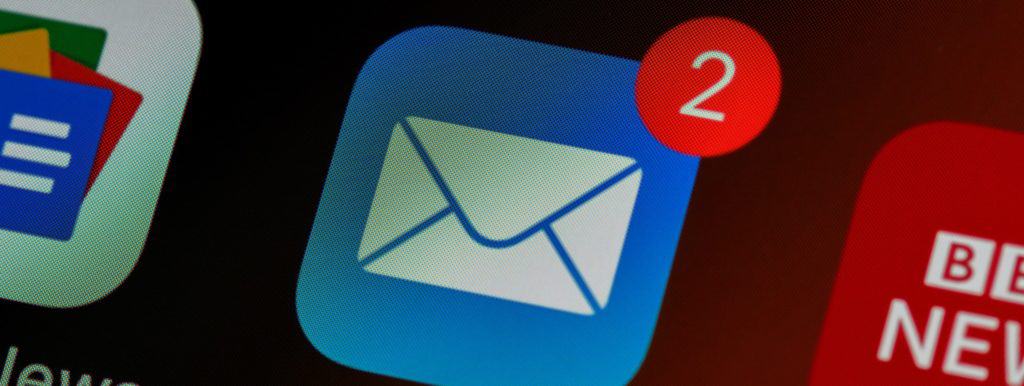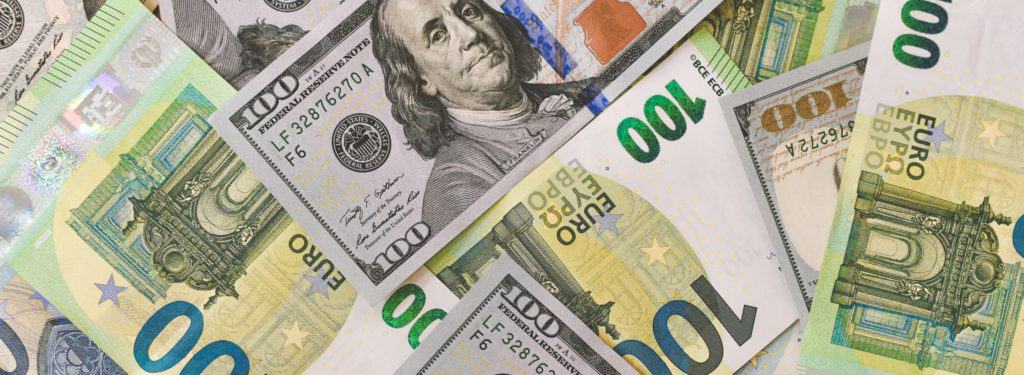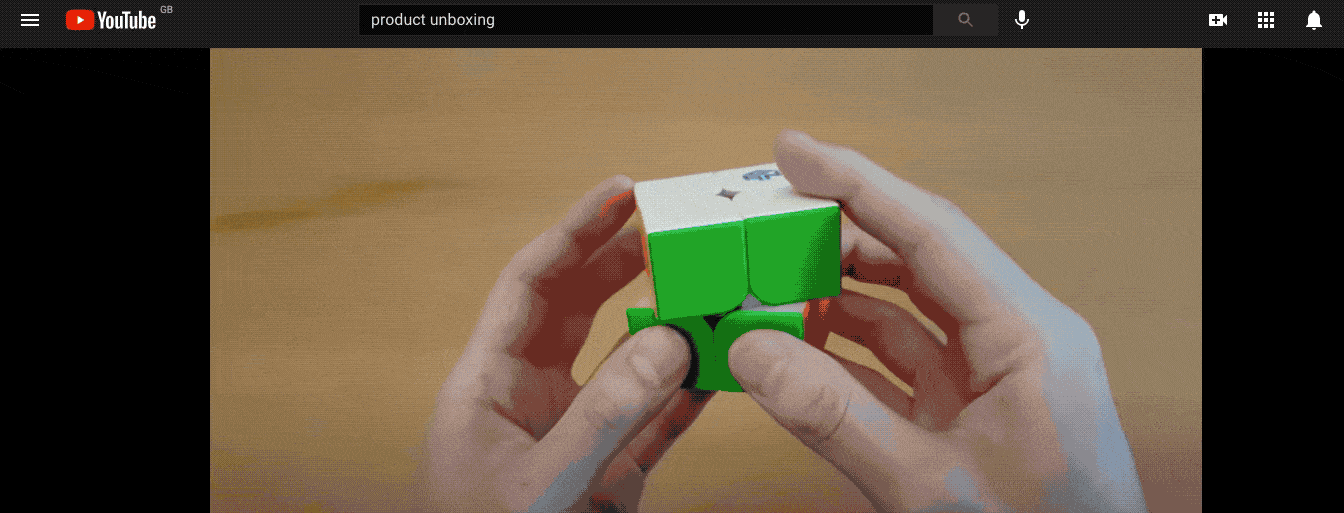Affiliate Marketing Glossary
a handy glossary of the terms, phrases and jargon used in the affiliate, partner or performance marketing industry
Search the glossary
There's a fair bit here, so search in your browser (Command-F on a Mac) or click on the letter to scroll further down the page...
A

Above the fold - From an old Newspaper term, the “above the fold” content shows in the first visible view. Mobile views will of course be different.
Ad Exchange - Advertising Traffic source groups that are connected with DSPs and SSPs.
Advertiser - Merchant or company which pays commissions to publishers or affiliates using several methods. See CPA, CPI, CPC, etc.
Adware - sometimes known as “spyware.” Self-installed software often bundled as part of another offer. Prevalent in the 2000s there were a number of rogue operators (like 180 solutions) which tarnished the view of the affiliate market.
Ad Blockers - a technology that prevents online ads from displaying on a website and which is increasingly prevalent mainly to combat programmatic ads. Most affiliate publisher sites employ strategies to overcome these.
Ad tag – an HTML element that is used to display ads by dynamically fetching them from an ad server. Sometimes it is also called ad snippet or container tag.
Affiliate - definition isn't that simple as it's a word also applied to a variety of business and financial 'affiliations'. Officially in many dictionaries, "a person or organisation officially attached to a larger body".
In our context, a traditional affiliate can be a person or company using trackable links on a website or other property. to promote an online merchant in exchange for commission. The 'attachment' here is by contract.
Affiliates are a brand’s marketing partners, (see more) who may operate across several marketing channels; cashback / loyalty publishers, coupon / voucher websites, review websites, shopping sites, bloggers, social media, Email, PPC affiliates, niche content, personal websites, app-to-app platforms, and even other brand partners. Affiliates are paid commissions by an advertiser for delivering a completed action by a website visitor.
Sometimes the term is also extended to MLM and leadgen agencies which muddies the term.
Affiliate management is pretty much what it says. The role of an affiliate manager is to provide the publishers with the support to promote the brand, building relationships, arranging promotions, managing and approving commissions and any other connected aspects.
This role may be an employee of the brand, an Outsourced Program Manager (OPM Agency) or affiliate network. With recent M&As in the industry affiliate management groups have appeared, as with Acceleration and Gen3 having acquired other OPMs. Read more in the Affiliate Management article.
Affiliate program (or programme) - an arrangement in which an advertiser pays commissions to affiliates for an action.
Advertisers use a performance tracking software to track users’ actions. This can be via an affiliate network, SaaS partner solution or simple tracking provider.
Affiliate software (SaaS) platform - the key differences between most traditional affiliate networks and SaaS solutions is that there are usually no exclusive affiliate partners to a SaaS platform and SaaS providers generally do not offer programme management services.
Affiliate text link – text (hyper)link with an affiliate link to click through to a merchant website.
Alexa rank - alexa.com (expensively) estimates and ranks based on browsing behaviours. Alexa uses a data panel representing all internet users and is reasonably accurate.
Alt text - Alternative text usually to display in place of an image.
AOV – average order value
API - is an Application Programming Interface. It’s an interface that lets users access data for the purpose of application development as well as automated searches. These can be integrated directly or by using tools like Zapier and Segment.
Anchor text - the words an affiliate link is linked from - the visible words in the affiliate text link
Attribution – the process of identifying which affiliates are driving conversions.
B

Banner Ad - Creative based advert usually in standard web sizes; 468x60 banner, 120x600 skyscraper, 250x250 box and 120x60 pixels button are some of the standard formats. Here's the top performing sizes and ad formats.
Base commission - the published remuneration on a program; advertisers may also offer performance-based bonuses.
Basket abandonment – When a customer leaves the website without completing a purchase or desired action. Tools like Upsellit can help to convert these.
Black Hat SEO - set of practices that are used to increases a site or page's rank in search engines through means that violate the search engines' terms of service. Tend to be used by SEOs working in highly competitive niches which promise high returns! Usually results in a Google penalty as these tactics are increasingly being seen through.
Blind network - nowadays usually refers to a sub-network; usually used to get extra sales fast often using a more Leadgen format - for verticals such as pharma, solar and CBD. Advertisers will often have no idea where or how their offer is being promoted with potential for significant brand risk.
Bonus - Addition payment or enhanced % commission for performance well above base rate.
C

Can Spam - US email compliance rules for commercial email, requirements for commercial messages to prevent rogue unsolicited emails. More details from the FTC.
Campaign - advert or offer for affiliates to promote; usually for a defined period as opposed to longer running programs.
Cashback Affiliates – Websites that offer consumers an amount of cashback in exchange for a desired action, typically a sale. As the US term loyalty implies, these websites have a loyal following of consumers and are often brands in their own right.
CJ – one of the first affiliate networks, CJ Affiliate is now part of Publicis
Clawback - a commission may be reversed after confirmation - usually in the case of Rev-share payment models.
Click – When a website visitor clicks on a text link or banner.
Click Active – refers to the number of affiliates registering at least one click during a reporting period. Many programs have several times as many registered as there are live. Publisher Discovery shows those with live links.
Click Fraud - Generating fake clicks in a program paying on a CPC basis. Fake clicks may be from robot or human actions. As the traffic is of no use, this usually results in affiliates being banned from affiliate networks.
Click Stream – describes the clicks a consumer makes in 'the funnel' prior to a purchase. Each 'click' happens when a visitor clicks on a trackable asset - sometimes across device depending on network. Attribution modelling has been developed to reward affiliates at all stages through the customer journey.
Click Through Rate – The percentage of web page visitors who click on a link. To calculate the CTR, divide clicks by impressions (or email opens).
Client-based tracking – client-based tracking is cookie tracking, largely being replaced due to GDPR and browser changes - read this from eConsultancy for more information.
Cloaking - The process of either hiding a webpage’s content or an affiliate tracking code on a link - with a potential to attract a Google penalty.
Commission – fees paid to an affiliate for a customer completing a purchase or registration. Also known as a referral fee in lead generation.
Commission Rate – usually expressed as a %age; so, on a commission rate of 5% on a sale of $100, the commission would be $5. Advertisers would also need to factor in network fees and/or 'override'
Content – any article that is editorial in style; may be a blog, review, video or social media post. Many advertisers make general 'content pieces' available for affiliates to use - or produce bespoke text and or creative content for their top affiliates (or Superaffiliates).
Content Affiliates – publishers who write and put together specific web content targeted at their audience. Many of the best have a loyal readership and provide engaged visitors with a usually high conversion rate.
Content Farm - refers to a site or group of websites that publishes huge amounts of cheap, low-quality content. This content is specifically created to generate traffic for search engines, though tends to offer poor conversion rates.
Contextual Links - Links within a content article; often used to describe linking technologies such as Skimlinks, Digidip and others.
Conversion – an event generated by an affiliate that an advertiser is willing to pay for. It can be a subscription, lead generated or product sold.
Conversion Rate –The average conversion from clickthrough to a sale, action, or lead; if three in every hundred referred visitors makes a purchase, then the conversion rate is 3%.
Cookies - A text file sent from a site to a specific file in a user’s web browser. Cookies help identify a website visitor. Tracking is changing due to GDPR and browser changes - read more on cookie consent and this from eConsultancy for more information.
Cookie Stuffing - deceptively dropping affiliate cookies onto users computers without the user ever having taken an action to fraudulently earn commissions.
Cookieless tracking - with third-party cookies largely disappearing, most tracking is moving over to use scripts that run to gather user data for tracking. The user remains anonymous but interactions are still recorded.
Cost per action (CPA) – The usual ecommerce commission structure based on a fee per action or % of a sale value.
Cost per click (CPC) – commission payment applies for each click affiliates generate - much as with Google Ads - and requires extremely careful management!
Cost per install - the dominant model for mobile app and game installs.
Cost per thousand (CPM) – the cost per thousand impressions of an ad or emails viewed - again needs strong management.
Cost per view - similar to CPM as a cost applies every time an ad is displayed.
Creative – usually advertising banners uploaded to your program interface; though in reality better engagement and conversion often comes from more general imagery as consumers are increasingly ad-blind. There are many shapes and sizes of banner; choosing the right one depends on the channel, target audience and message.
D

Datafeed - A datafile or API with a full list of an advertiser's inventory. It usually includes SKUs, descriptions, images, and the prices of the advertised products.
Dayparting - allows affiliates to target specific days or hours according to their performance.
Deal Affiliates – affiliated with a primary focus discount coupon, voucher or other incentive. Deal affiliates are occasionally referred to as a hybrid of a coupon and content partner.
Deeplink - most affiliate networks offer affiliates a deep linking function, to direct visitors to a particular page or item on the advertiser’s website.
Demand Side Platforms - interfaces where you can buy digital usually programmatic advertising inventory.
Disclosure - affiliate notice or page to ensure visitors are fully aware that any purchasing suggestions or product endorsements may be monetized. The disclosure is crucial for you to be compliant with FTC laws.
Display - usually refers to sites that run affiliate banner ads and/or videos on a CPM basis.
Domain Authority - a 0-100 score to estimate how well a website will rank across search engines.
Double Opt In - where a subscriber has confirmed the subscription. The user confirms they agree to subscribe to the service. Then reconfirm by clicking an email link; especially of email subscriber lists.
Duplicate Content - this usually refers to huge blocks of content that matches other websites' content completely or is remarkably similar.
E

Earnings per click (EPC) - (or sometimes its Earnings per Hundred clicks!) used by affiliates to gauge the value of an affiliate program. It shows you the potential revenue per 100 clicks.
Email Affiliates – these partners manage or own large consumer databases, often operating more in the Leadgen segment of affiliate. They have access to vast amounts of consumer demographic data and are able to segment their databases to run highly targeted campaigns.
F

Feeds - data files with a list of all the products sold by a given advertiser - of SKUs, images descriptions, and prices of their inventory of products.
First click attribution - some programs are set so that the first affiliate link to refer a visitor in the cookie life is awarded commission on the sale. Very much a favourite of bloggers and influencers.
G

Gap analysis - comparison of an affiliate program against a selection of competitors. Easy to do with Publisher Discovery.
Geo-targeting – identification of website visitors from their geographical area. Specific and or language messaging can be used to provide for stronger conversion.
GDPR - EU laws for 'General Data Protection Regulation' covering email marketing. See more on the EU Website.
Grey Hat or (gray hat) - SEO tactics that are questionable in how google-friendly they are (bending rules rather than breaking them as in Black Hat) - but all designed to get increased traffic to a website. More recent Google updates are seeing through much of this and will bring penalties.
H

Hyperlink - old school for an active link.
I

Impressions - this refers to the number of times an ad is shown on a page.
In-house program - advertisers who manage their affiliate program by themselves using an affiliate software instead of an affiliate network.
Incentive affiliates - Where website visitors are offered incentives to complete a set action that ultimately results in the affiliate earning a commission. The incentives could be a prize, discounts, money or even free subscriptions - and needs to be carefully managed.
Incrementality – refers to sales or lead volume that is supplemental to the levels prior to a change in program or in newly recruited affiliates as in this Case Study.
'Indie' Program - simply an Independent Affiliate Program running an affiliate program using affiliate software instead of an affiliate network or SaaS provider.
Influencers - publishers with strong and loyal following and or readership. Have increasingly moved towards the affiliate model in recent times where fixed budgets are less certain.
Influencer Network – a newer resource connecting brands with thousands of influencers via a network. Influencers are fully assessed for potential value prior to being added to an influencer network.
Insertion order (IO) - is a contract between two parties as in this example insertion order. It is a binding contract with detailed terms an usually signed by the affiliate and advertiser. Insertion orders also are considered contracts in SaaS platforms with the designated commission rate, timeline and programme terms and conditions.
IPMA - the annual International Performance Marketing Awards, run by Existem and PerformanceIn and presented in London, England.
J

Joint Venture - or more usually now, an advertiser partnership where either or both partners utilize affiliate or SaaS tracking. Often for cross referrals between complementary merchants.
K

Keyword - the words or phrases typed into a search engine to see results. Google is changing more towards 'entities' and being more Topic based. Affiliate marketers can be very strong resource as a partner to support a brand's own SEO.
Keyword Density - affiliates need to have due regard to this in a website to ensure it fits Google's expectation. Tools such as Yoast can help manage this.
L

Landing Page - specific URL to targer an affiliate campaign to. Usually simpler than a home page and designed to convert to a single action - crucial in ensuring affiliates see conversions and sales from their traffic.
Last click - attribution of all commission to the affiliate who had the last click before the transaction occurred. Unfortunately still the default on programs, which leads to disproportionate performance of cashback and coupon affiliates.
M

Machine learning - technologies applied to affiliate marketing to enable quicker and clearer analysis of the huge data-sets involved. Applied by ourselves to recommend potential new publisher partners.
Manual approval - the process of assessing affiliates before accepting them as an affiliate. Usually covers the affiliate’s ID, financial status, address, web properties and social presence and more. Most networks can only assess the domains submitted - and often, affiliates will use links across all their websites.
Mass Media – major media publishers are high readership publications now both online and offline, such as Hearst and News International. They produce quality content from established journalists for a highly engaged and often loyal audiences. Over recent years most have embraced the affiliate model to monetize their huge volumes of content.
Mininets - a small virtual network set up to promote and advertise affiliate offers, products, services or websites across multiple web domains. Mininets can also increase the SEO of the website more effectively than Content Farms.
MLM - multi-level marketing a term rather tarnished by pyramid trading. Equally not that desirable in mainstream affiliate where transparency and partnership should drive relationships. Sub-networks occasionally operate to arbitrage mainstream network offers in this way.
Mobile Affiliate - affiliates targeting consumers via mobile apps; traffic is usually largely invisible as links from an app are often direct to app or for an app Install (paying a CPI commission).
N

Naked Linking - a term used by Linkconnector to describe their approach to direct to merchant linking. Others such as Partnerize and Tradetracker also utilize similar technologies eliminating the clickthrough via the network.
New to file - a brand new customer and often considered most valuable kind of customer by many merchants. May attract a different commission to a returning customer.
Niche marketing - marketing focused on a specific group of consumers. A well-defined niche enables marketers to create more personalized campaigns that will yield better results.
O

Offer - is a promotion that a brand promotes via their affiliate partners. Many larger affiliates employ leverage to get a unique or bespoke offer to promote; also termed a campaign for Leadgen.
Offer URL – the landing page URL where a visitor will arrive after clicking the offer link. Landing pages are designed specifically to convert to sale.
OPM - Outsourced Program Manager; an affiliate management agency which manages the network and affiliate relationships on behalf of the advertiser usually on a mix of fixed and performance based fees.
Override - the %age additional commission payable as the affiliate network transaction fee. This is often expressed as the % of the affiliate commission; so a 30% override on a 10% commission = 13% of sale value overall. This is often supplemented with additional network and/or software fees.
P

Paid placements – advertising on an influencer’s posts or blogs or affiliate’s website, negotiated at a set price for a given period. Arranged between the brand and the affiliate/influencer or between an affiliate marketing agency and the affiliate on behalf of the brand.
Partner - company or publisher promoting an advertiser’s products or services via their blog, reviews or website and paid by affiliate commission. As the term suggests, this refers to a more mature relationship where affiliate and advertiser are aligned in their objectives.
Increasingly, the term is being applied to inter-merchant partnerships tracked by affiliate and SaaS tracking and affiliate model referral fees. See more in Affiliate
Payment Threshold - a payable commission level that affiliates need to hit before payments become triggered.
PMAs - Performance Marketing Awards, run by Existem and PerformanceIn and presented in London, England.
Post-back URL – a URL used for server-side conversion tracking; also called server post-back URL or server-to-server URL.
Pinnacle Awards - awards usually presented in conjunction with Affiliate Summit though appear to have paused recently.
Pixel Tracking - tracking via a usually 1x1 pixel image file placed on an advertisers payment complete or ‘thank you’ page.
PPC Affiliates - Pay Per Click (PPC) or Search affiliates promoting via Google or other search based paid ads. Allowable and forbidden keywords are often included in program T&Cs.
Price comparison – these compare multiple advertisers' pricing across different brands for similar products in order to make an informed decision on the best option for them. Especially strong across competitive product areas such as white goods, technology products and webhosting. The listings may well be skewed by bigger brands paying a 'tenancy fee' as well as CPA to secure higher spots in Top-10 listings.
Programmatic marketing – automated, real-time bidding process for purchasing ad inventory; usually for specific contextual ad placements.
Projections – estimate of results for the outcome of a specific campaign.
Publisher: company that earns a commission from promoting a brand’s products or services. Used as a synonym for affiliate, 'Publisher' covers bloggers, emailers, social posters, content site owners, product reviewers, shopping websites, mobile apps developers, mass media publishers (with multiple titles, cashback and coupon websites.
Finding a the publisher isn't always simple as you'd think, or necessarily the person an affiliate manager needs to connect with, as the article on website publishers covers.
Push notification – clickable pop-ups that appear on users’ browsers. Affiliates in areas like coupon and cashback push notifications to their audiences via their own apps to alert a new deal or offer.
Q

Quality Score - a google measurement for insights on keyword relevance to advertising text, query and landing page.
Quarterly business review - analysis report on an affiliate program, volumes and changes prepared by a network or OPM; usually with recommendations for the coming period.
R

Recruiting - the act of engaging with new publishers to add to an affiliate program. Publisher Discovery is the leading platform to enable this at scale.
Recruitment Tools - Publisher Discovery is the industry leading affiliate recruitment tool, available via several partners, or by simple monthly subscription.
Redirect - most standard affiliate links use a 302 redirect via the network tracking to the advertiser landing page. Naked linking shows as a simple 301. Here's chapter and verse to go way beyond any glossary coverage!
Referral Fee - commissions payable in fixed amounts usually in lead generation.
Referring URL - The 'Uniform Resource Locator' a website visitor arrives from - your affiliate.
Retargeting affiliates – have technology which enables merchants to re-engage with customers who visited their site but did not make a purchase, usually in exchange for a commission. Pioneered by companies such as Criteo.
Return on ad spend (ROAS) – a measurement of revenue divided by all the costs relevant to the marketing channel. Remember to factor in all the agency, creative and network costs as well as commissions.
Revenue – advertiser's earnings from the sale of a product or service.
Rev-Share - commissions based on a share of revenues. In FX and Gambling, this is usually based upon a share of referred customers’ losses. In many cases this can be as high as 55% of an operator’s revenues. May be subject to ‘clawbacks’ where a punter reverses his luck!
Risk Management is an essential part of program managment, and most affiliate networks and OPMs will off affiliate risk management services as part of their overall service. This includes keyword abuse or any potential fraud from malpractice - read more on Brand Verity's blog.
S

S2S tracking – tracking based on post-backs from advertiser’s systems to a tracking software provider, usually a SaaS provider. Advertisers have to support this type of tracking in their back-end, so is a more technically complex option. It is more accurate, provides better security, and greater flexibility.
Sale active – affiliates who have driven at least one sale during the last month or quarter.
SEO affiliate - SEO is about optimizing the content of a publisher's website to rank on search engines for particular keywords. Can be very useful partners to defend your brand in search against your competitors.
Search affiliates – partners that specialise in PPC (Pay-Per-Click) advertising. Often referred to as PPC arbitrage; the partner uses PPC on keywords in search but earns on an affiliate CPA model.
Software as a Service (SaaS) – Similar to affiliate networks, an affiliate SaaS platform is a type of affiliate technology provider. It also provides the tracking links, tracks and pays affiliates for conversions.
A few key differences between most affiliate networks and SaaS solutions is that there are no exclusive affiliate partners to a SaaS platform and SaaS providers do not offer programme management services. Their focus is purely on the performance marketing technology.
Sub-network - usually running short term leadgen campaigns for specific offers; these are often Blind giving no detail on how an offer will be distributed.
Superaffiliate - A largely outdated term, sometimes referring to a group of affiliates who account for most of an affiliate program’s volume. Mostly now used in FX and Gaming, where affiliate Rev-share earnings can be astronomical.
T

Technology Affiliates – ecommerce tools paid through a performance basis. Brands can choose to partner with a variety of different types of technology affiliates, including basket abandonment, retargeting, basket and product suggestions.
Tenancy fee - more usually termed Placement Fee; a fixed payment for guaranteed position on a publisher website.
TLAs - Three letter acronyms - rather too many of them!
Toolbar affiliates - These earned the affiliate a poor reputation back in the 2000s through adware installations. More recently publishers such as Honey have taken the medium to another level.
Tracking - the action of following a unique user from a referring affiliate through to an advertiser, usually through to a successful sale or action. Can be via a tracking pixel or S2S tracking - discuss this with your network.
Traffic - volume of visits and visitors to an affiliate site. Also a metric touted by search and Email affiliates chiefly for Leadgen programs.
U

Unique user - identified referred visitor tagged with information about their IP address, browser ID or other identification. A visitor is marked as a unique user for a specific period of time such as cookie length to aid in Attribution.
Universal basket - more used by Meta publishers in travel, to allow consumers to buy multiple product categories in a single transaction (usually, flight, transfer, hotel, etc). Can be applied in more general Ecommerce areas as well - see more from ub.io.
V

Voucher - or coupon (US); usually a discount offer with a code to apply at check-out
Voucher Affiliates – partners that offer deals and promotional messaging, usually in the form of a digital coupon or voucher for a percentage off the customer’s order, free delivery or gifts with certain purchases.
W

Web Crawlers - or spider visits web pages to identify all the page’s hyperlinks. Publisher Discovery crawlers visit over 4 million websites monthly to check for the latest live affiliate links.
White label publisher - there is an increasing trend in low traffic thin websites all built on the same templates - and usually worth avoiding.
X

XML - eXtensible Markup Language - (ask your CTO!)
Y

Youtube affiliates - publishers often creating content around product unboxing, reviewing or comparing. Some Influencers are also creating live content in fashion, travel or other sectors around which products are promoted - usually in the section below the play screen.
Z

Generation-Z - you'll need some great publisher partners to help in marketing to this segment. Read more in our Publisher Spotlight on Studentbeans.
Still not found it?
We've tried to include as many terms as possible in this affiliate glossary that a new affiliate manager will come across. Just type in the search box to find references elsewhere in the website.
...or check out the Affiliate Management Training Courses if you want to learn more.

